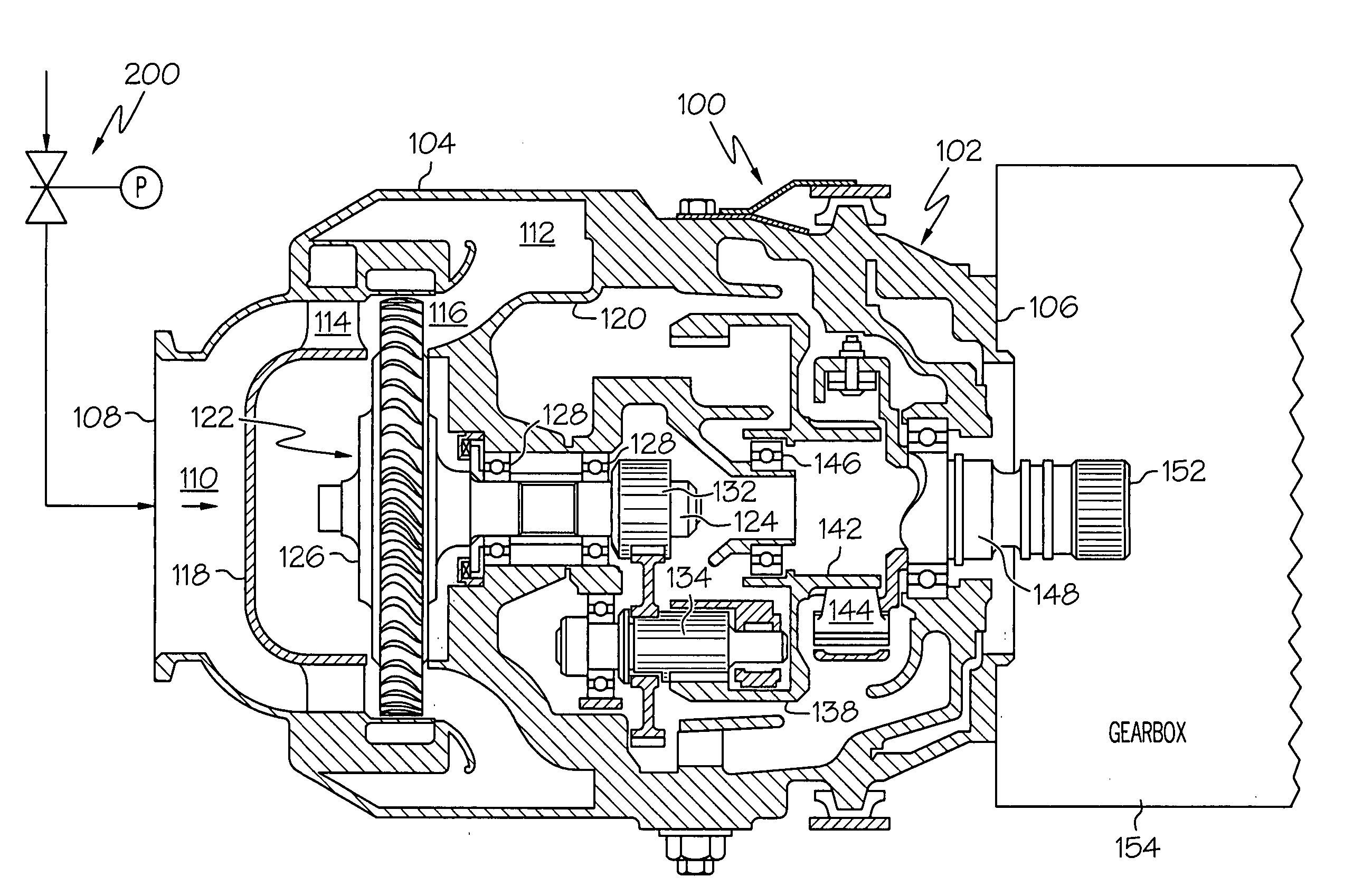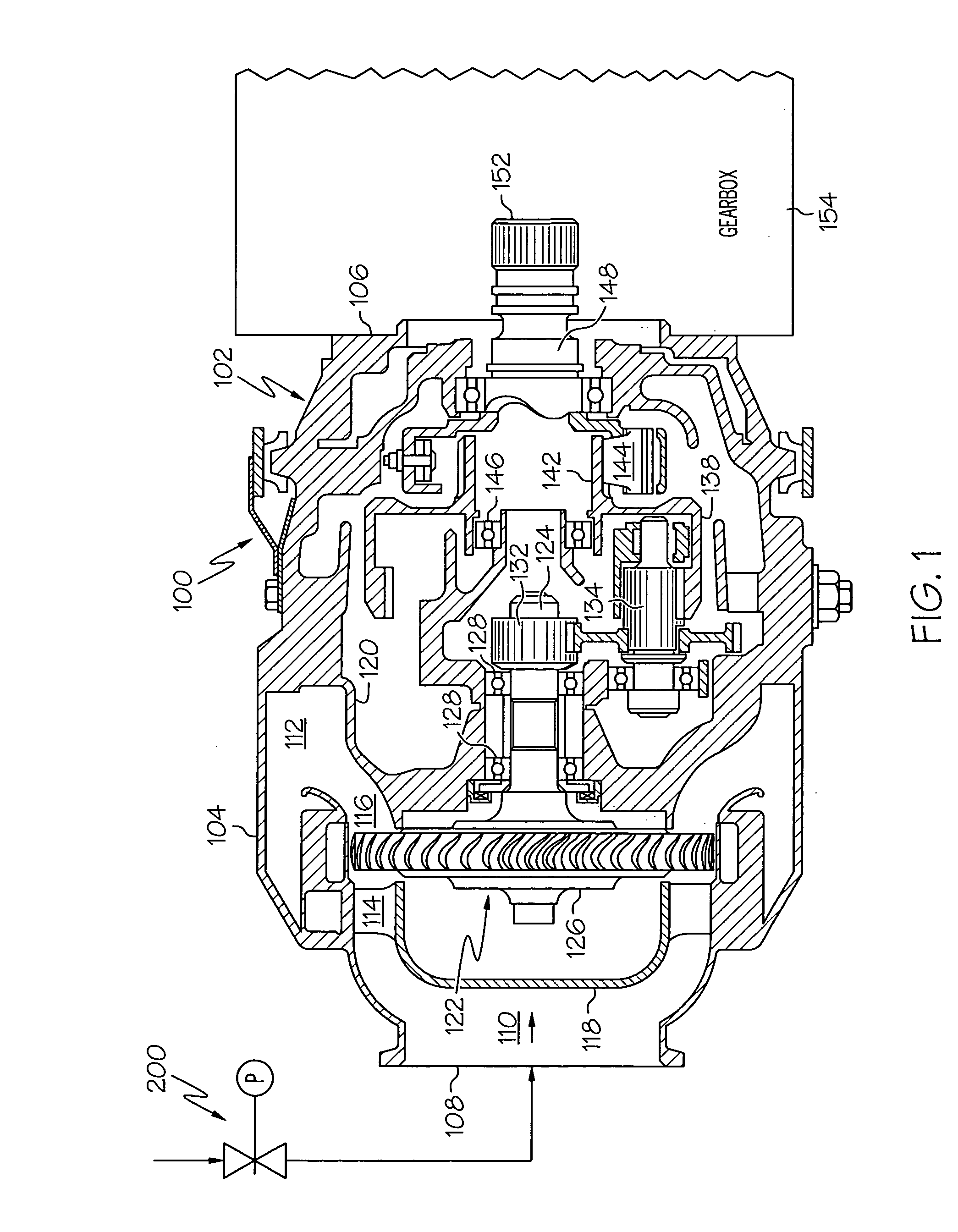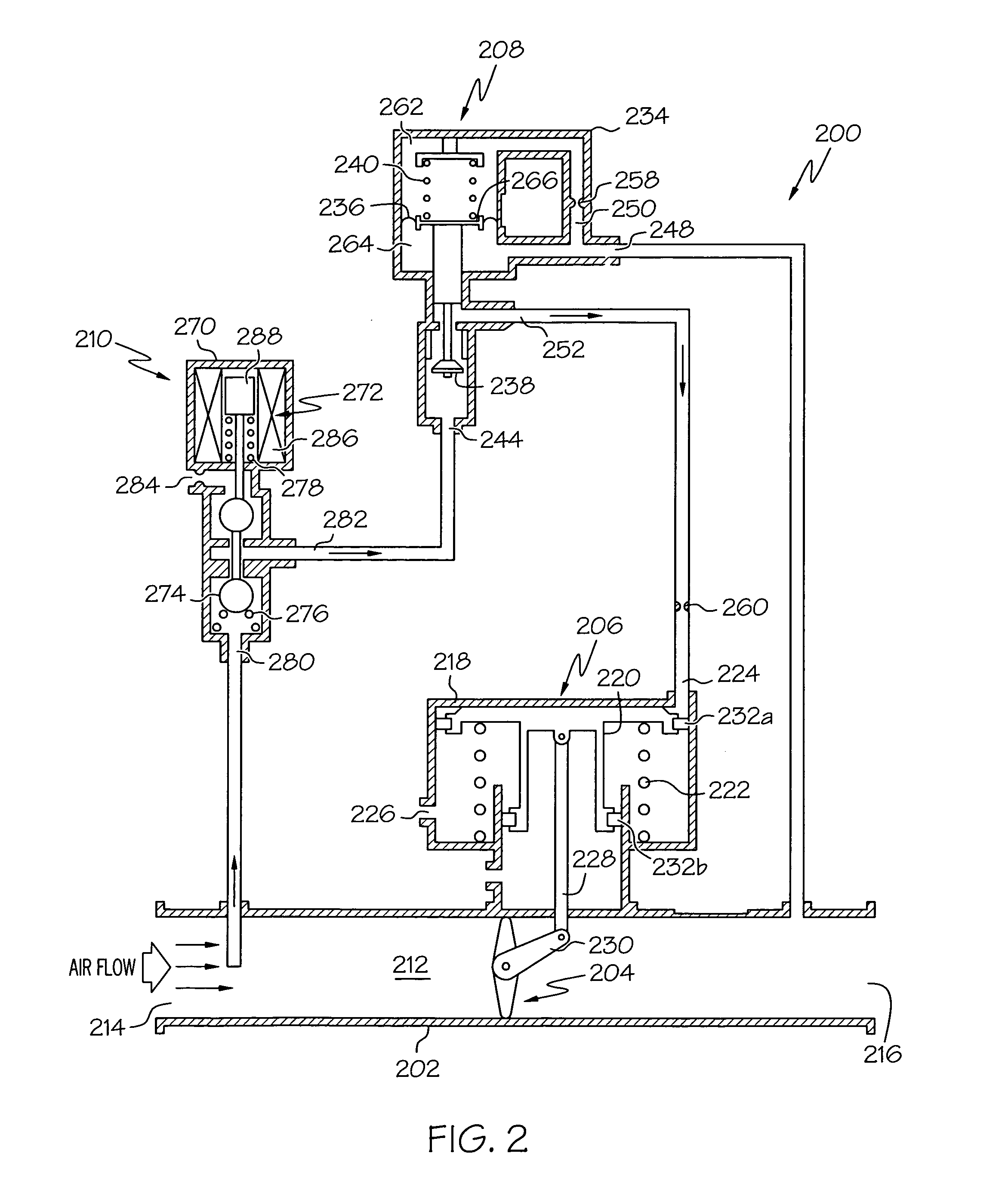Pneumatic valve control using downstream pressure feedback and an air turbine starter incorporating the same
a technology of pneumatic valve and feedback, which is applied in the direction of fluid pressure control, liquid fuel engines, instruments, etc., can solve the problems of affecting the opening performance affecting the operation and leaking past the actuator piston, so as to improve the opening characteristics of the starter air valv
- Summary
- Abstract
- Description
- Claims
- Application Information
AI Technical Summary
Benefits of technology
Problems solved by technology
Method used
Image
Examples
embodiment 300
[0048] The remaining portion of this starter air valve embodiment 300 that differs from the previous embodiment is the bleed flow passage 306. The bleed flow passage 306 is fluidly coupled between the actuation control valve housing outlet flow passage 282 and the rate control servo mechanism housing control air inlet flow passage 244. In particular, the bleed flow passage includes an inlet port 340 that is fluidly coupled to both the actuation control valve housing outlet flow passage 282 and the rate control servo mechanism housing control air inlet flow passage 244, and an outlet port 342 that is vented to the surrounding environment. A bleed orifice 344 is disposed within the bleed flow passage 306, and restricts the flow of pressurized air through the bleed flow passage 306. The bleed orifice 344 is sized to not only limit pressurized air flow through the bleed flow passage 306, but additionally ensures that the pressure downstream of the regulator housing outlet flow passage 3...
embodiment 200
[0055] When it is desired to close the starter air valve 300, its operation is similar to that of the previously described embodiment 200. In particular, the actuation control valve solenoid 272 is first de-energized, which allows the solenoid bias spring 278 and the valve bias spring 276 to move the valve 274 to the first position. With the valve 274 in the first position, the bleed flow passage 340 is fluidly isolated from the reference regulator 302. However, the bleed flow passage 340 and actuation control valve vent port 284 remain fluidly coupled to the rate control servo mechanism housing control air inlet flow passage 244. Because the poppet valve 238 is biased toward its open position, the control air outlet flow passage 252 and thus the actuator housing 218 are fluidly coupled to the bleed flow passage 340 and vent port 284. Thus, the regulated control air in the actuator housing 218 is vented to atmosphere via the bleed flow passage 340 and vent port 284. This releases th...
PUM
 Login to View More
Login to View More Abstract
Description
Claims
Application Information
 Login to View More
Login to View More - R&D
- Intellectual Property
- Life Sciences
- Materials
- Tech Scout
- Unparalleled Data Quality
- Higher Quality Content
- 60% Fewer Hallucinations
Browse by: Latest US Patents, China's latest patents, Technical Efficacy Thesaurus, Application Domain, Technology Topic, Popular Technical Reports.
© 2025 PatSnap. All rights reserved.Legal|Privacy policy|Modern Slavery Act Transparency Statement|Sitemap|About US| Contact US: help@patsnap.com



